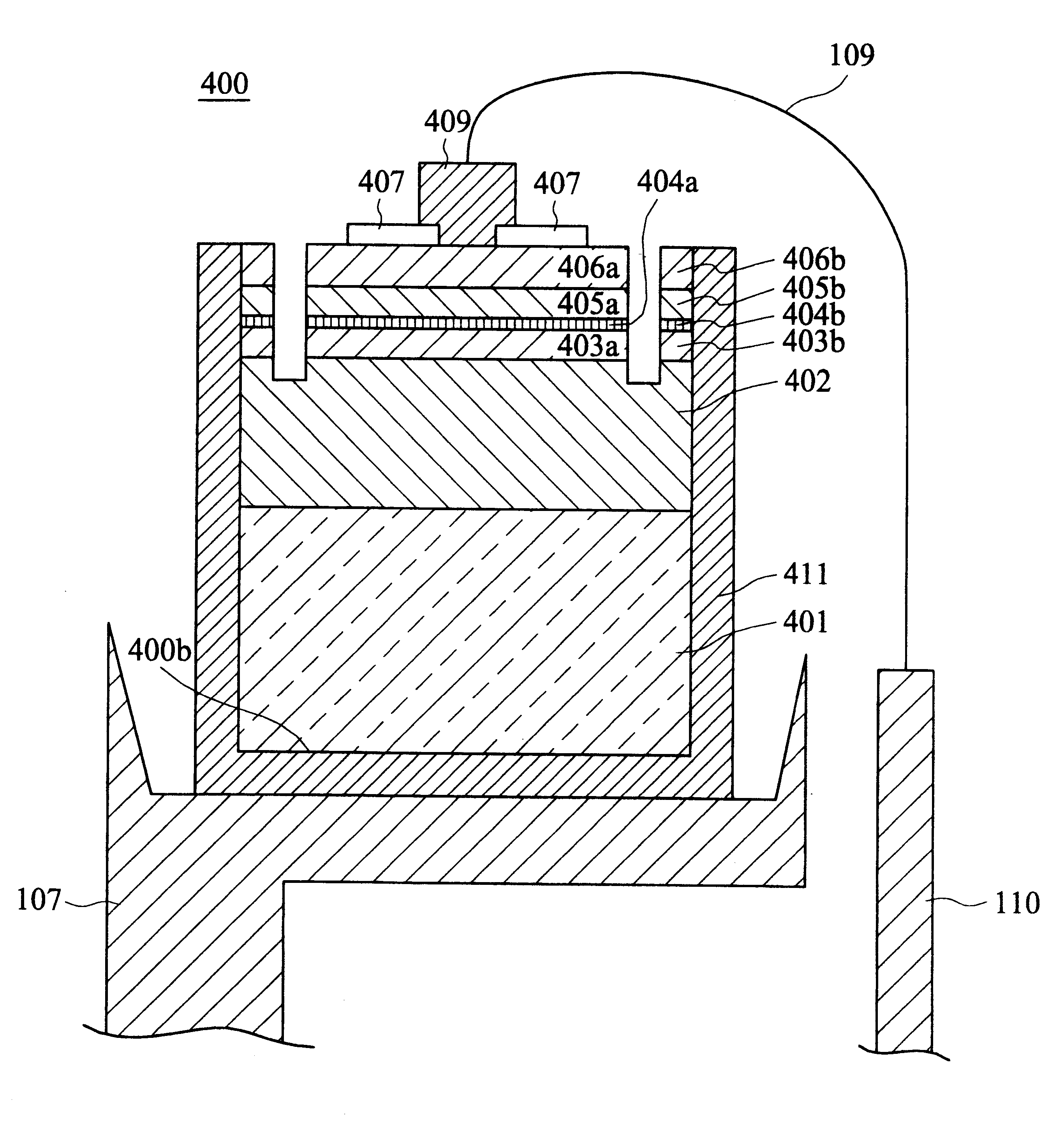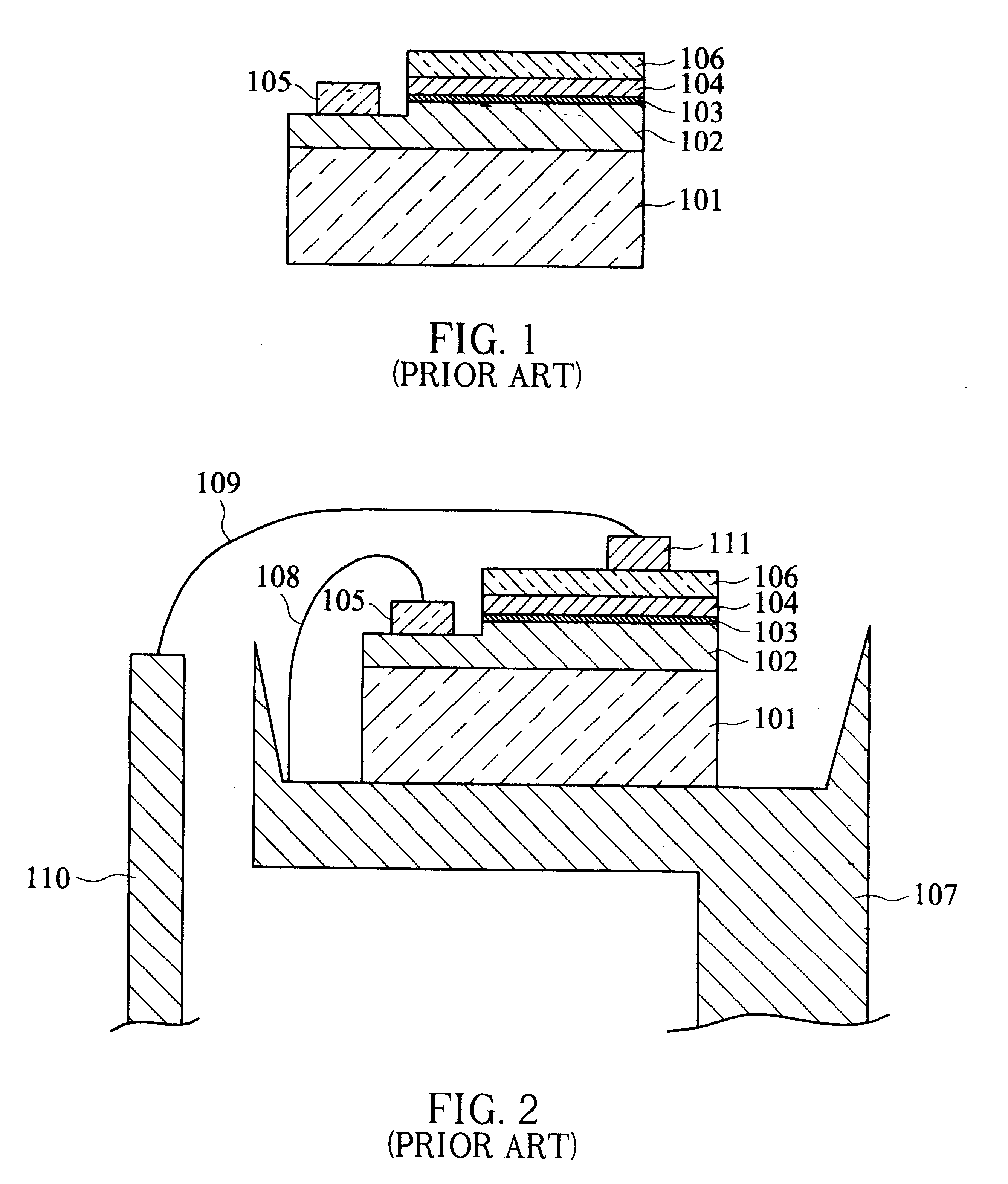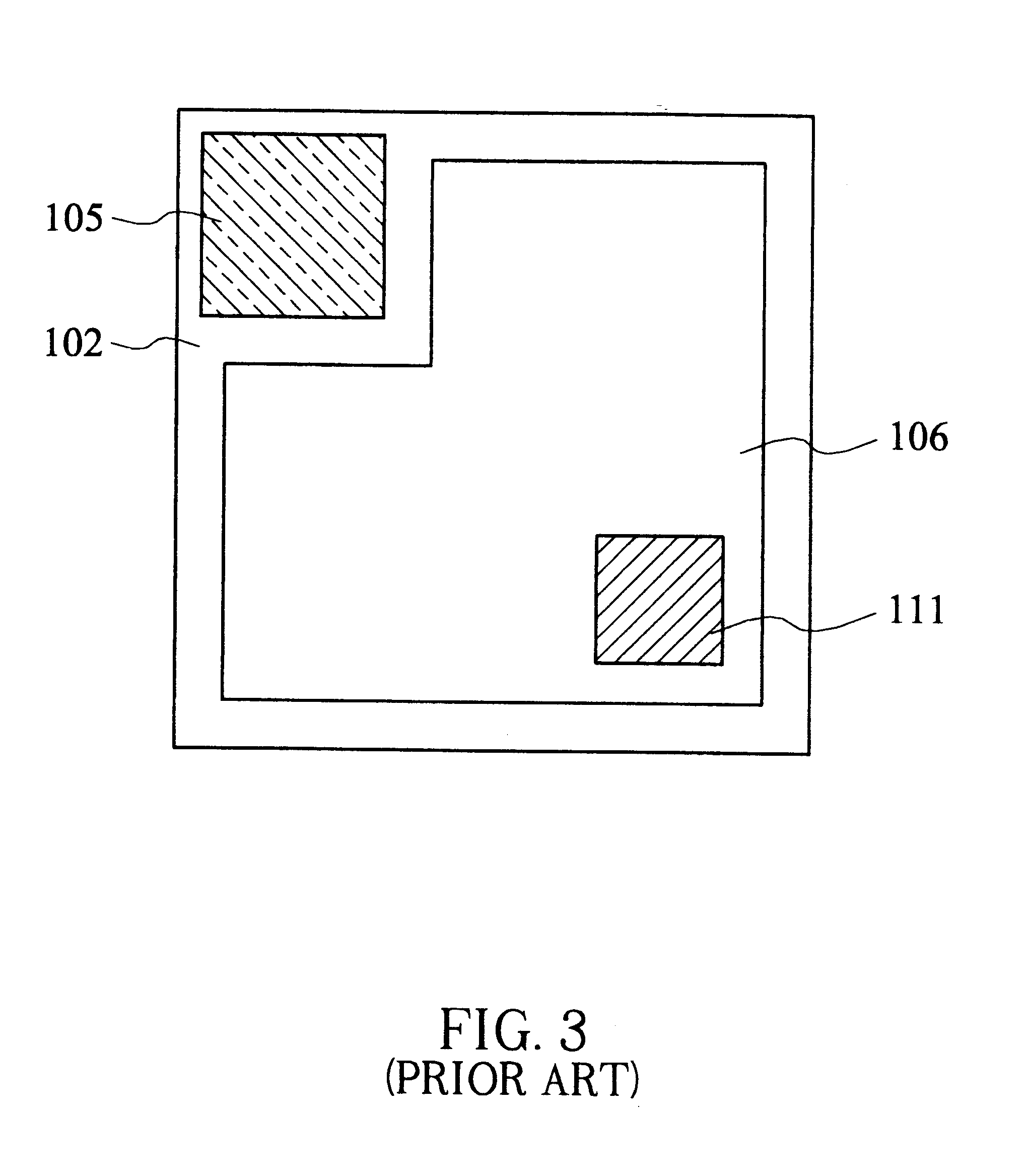Light-emitting diode device and method of manufacturing the same
a technology of light-emitting diodes and led devices, which is applied in the direction of semiconductor/solid-state device manufacturing, semiconductor devices, electrical apparatus, etc., can solve the problems of high fabrication cost, difficult conventional manufacturing, and inability to directly form n-type electrodes on sapphire substrates
- Summary
- Abstract
- Description
- Claims
- Application Information
AI Technical Summary
Problems solved by technology
Method used
Image
Examples
first embodiment
[First Embodiment]
FIGS. 4(a) to 4(e) are cross-sectional views showing the steps of manufacturing a blue LED 400 according to a first embodiment of the present invention.
Referring to FIG. 4(a), an n-type layer 402 with a thickness of 3 .mu.m to 5 .mu.m is first formed on an insulating substrate 401. The insulating substrate 401 is usually made of sapphire. On the n-type layer 402, an n-type confining layer 403 with a thickness 0.1 .mu.m to 0.3 .mu.m, an active layer 404 with a thickness of 500 .ANG. to 2000 .ANG. for emitting the light, a p-type confining layer 405 with a thickness of 0.1 .mu.m to 0.3 .mu.m, and a p-type layer 406 with a thickness of 0.2 .mu.m to 1 .mu.m are sequentially formed. Each of these layers 402 to 406 is made of a GaN-based compound semiconductor material. For example, a quaternary compound semiconductor material of In.sub.x Al.sub.y Ga.sub.1-x-y N can be adopted to form the layers 402 to 406 with different conductivity types and concentrations of dopants, ...
second embodiment
[Second Embodiment]
FIG. 7 is a cross-sectional view showing a blue LED 700 according to a second embodiment of the present invention. In FIG. 7, the elements of the blue LED 700 similar to that of the blue LED 400 shown in FIGS. 4(a) to 4(e) are referred to as the similar reference numerals. For the sake of simplification, only the difference of the second embodiment from the first embodiment is described hereinafter.
During manufacturing of the blue LED 700, all steps are the same as that of manufacturing the blue LED 400 shown in FIGS. 4(a) to 4(e) except for an adhesion layer 701 is formed to cover the sidewalls 400a and the bottom surface 400b of the LED structure 700 before the formation of the conductive layer 411. The adhesion layer 701 is used to enhance the adhesive property between the sidewalls and bottom surface of the insulating substrate 401 and the conductive layer 411. The material of the adhesion layer 701 may be Ti, Ni, Al, Cr, Pd, or any metal which can enhance the...
third embodiment
[Third Embodiment]
FIG. 8 is a cross-sectional view showing a blue LED 800 according to a third embodiment of the present invention. In FIG. 8, the elements of the blue LED 800 similar to that of the blue LED 400 shown in FIGS. 4(a) to 4(e) are referred to as the similar reference numerals. For the sake of simplification, only the difference of the third embodiment from the first or second embodiment is described hereinafter.
As described in the first and second embodiment, the light generated in the central active layer 404a is then emitted out of the blue LED 400 through the top side, i.e. the central p-type layer 406a, of the blue LED 400. However, the third embodiment provides a blue LED 800 which emits out the light generated in the central active layer 404a through the bottom side, i.e. the insulating substrate 401, of the blue LED 800.
In order to achieve the blue LED 800 of the third embodiment, the conductive layer 801 is formed as a light-transmissive layer to allow the trans...
PUM
 Login to View More
Login to View More Abstract
Description
Claims
Application Information
 Login to View More
Login to View More - R&D
- Intellectual Property
- Life Sciences
- Materials
- Tech Scout
- Unparalleled Data Quality
- Higher Quality Content
- 60% Fewer Hallucinations
Browse by: Latest US Patents, China's latest patents, Technical Efficacy Thesaurus, Application Domain, Technology Topic, Popular Technical Reports.
© 2025 PatSnap. All rights reserved.Legal|Privacy policy|Modern Slavery Act Transparency Statement|Sitemap|About US| Contact US: help@patsnap.com



